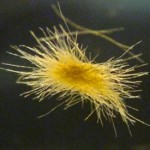 The Great Barrier Reef has lost half its coral cover in the last 27 years. The loss was due to storm damage (48%), crown-of-thorns starfish (42%), and bleaching (10%), according to a new study published in the Proceedings of the National Academy of Sciences on October 2 by researchers from the Australian Institute of Marine Science (AIMS) in Townsville and the University of Wollongong.
The Great Barrier Reef has lost half its coral cover in the last 27 years. The loss was due to storm damage (48%), crown-of-thorns starfish (42%), and bleaching (10%), according to a new study published in the Proceedings of the National Academy of Sciences on October 2 by researchers from the Australian Institute of Marine Science (AIMS) in Townsville and the University of Wollongong.
“We can’t stop the storms but, perhaps we can stop the starfish. If we can, then the Reef will have more opportunity to adapt to the challenges of rising sea temperatures and ocean acidification,” says John Gunn, CEO of AIMS.
“This finding is based on the most comprehensive reef monitoring program in the world. The program started broadscale surveillance of more than 100 reefs in 1985, and from 1993, it has incorporated more detailed annual surveys of 47 reefs,” says one of the program’s original creators, Dr. Peter Doherty, Research Fellow at AIMS.
“Our researchers have spent more than 2,700 days at sea and we’ve invested in the order of $ 50 million in this monitoring program,” he says.
“The study shows the Reef has lost more than half its coral cover in 27 years. If the trend continued coral cover could halve again by 2022. Interestingly, the pattern of decline varies among regions. In the northern Great Barrier Reef, coral cover has remained relatively stable, whereas in the southern regions, we see the most dramatic loss of coral, particularly over the last decade when storms have devastated many reefs,” says Peter Doherty.
The study clearly shows that three factors are overwhelmingly responsible for this loss of coral cover. Intense tropical cyclones have caused massive damage, primarily to reefs in the central and southern parts of the Reef, while population explosions of the coral-consuming Crown-of-thorns starfish have affected coral populations along the length of the Reef. Two severe coral bleaching events have also had major detrimental impacts in northern and central parts of the GBR.
“Our data show that the reefs can regain their coral cover after such disturbances, but recovery takes 10-20 years. At present, the intervals between the disturbances are generally too short for full recovery and that’s causing the long-term losses,” says Dr. Hugh Sweatman, one of the study’s authors.
“We can’t stop the storms, and ocean warming (the primary cause of coral bleaching) is one of the critical impacts of the global climate change,” says AIMS CEO John Gunn. “However, we can act to reduce the impact of crown of thorns,” he says. “The study shows that in the absence of crown of thorns, coral cover would increase at 0.89% per year, so even with losses due to cyclones and bleaching there should be slow recovery.”
“We at AIMS will be redoubling our efforts to understand the life cycle of crown of thorns so we can better predict and reduce the periodic population explosions of crown of thorns. It’s already clear that one important factor is water quality, and we plan to explore options for more direct intervention on this native pest.”
The analysis presented in the paper was conducted with partial support from the Australian Government‘s National Environmental Research Program.
Source: AIMS.














